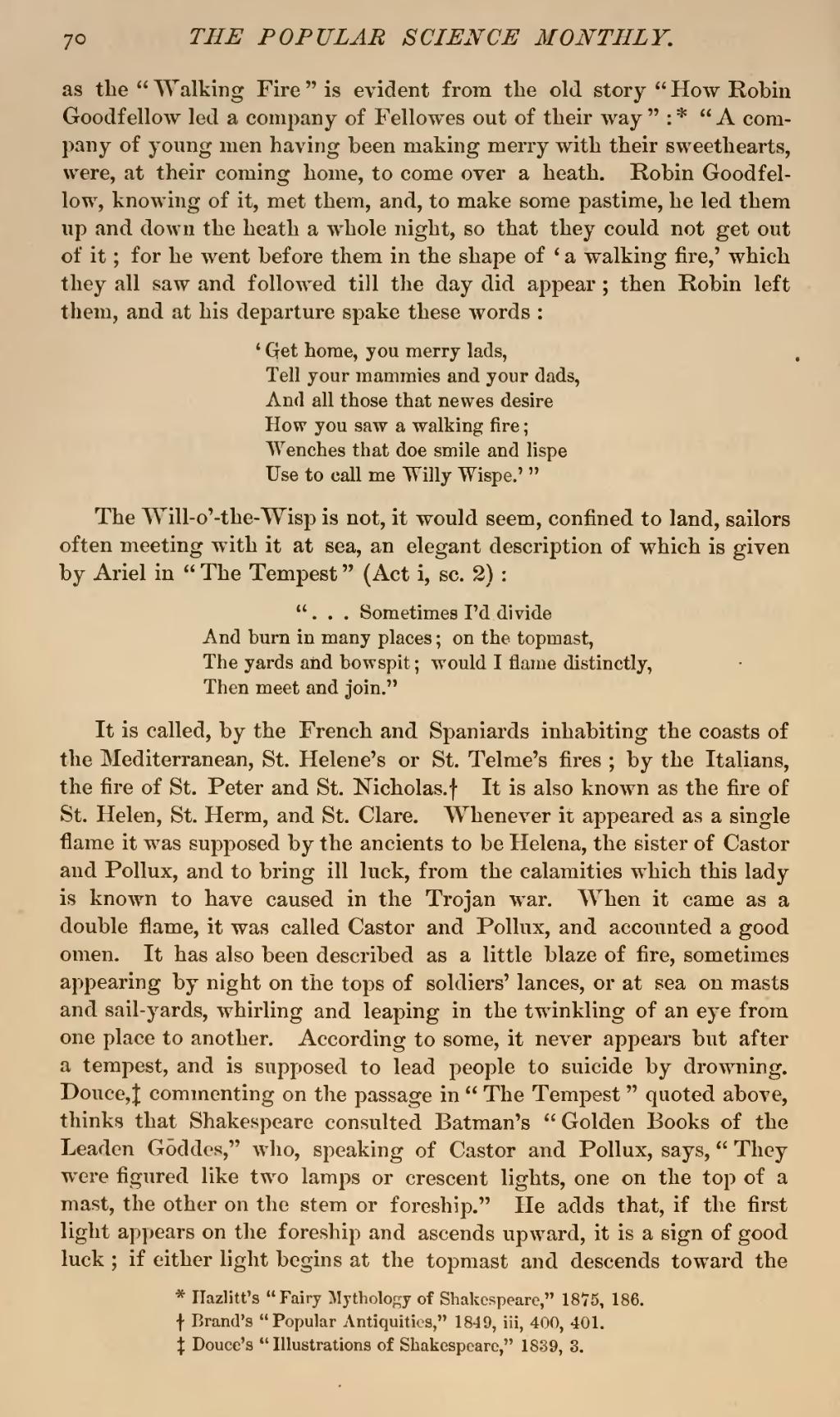as the "Walking Fire" is evident from the old story "How Robin Goodfellow led a company of Fellowes out of their way":[1] "A company of yoimg men having been making merry with their sweethearts, were, at their coming home, to come over a heath. Robin Goodfellow, knowing of it, met them, and, to make some pastime, he led them up and down the heath a whole night, so that they could not get out of it; for he went before them in the shape of 'a walking fire,' which they all saw and followed till the day did appear; then Robin left them, and at his departure spake these words:
Tell your mammies and your dads,
And all those that newes desire
How you saw a walking fire;
"Wenches that doe smile and lispe
The Will-o'-the-Wisp is not, it would seem, confined to land, sailors often meeting with it at sea, an elegant description of which is given by Ariel in "The Tempest" (Act i, sc. 2):
And burn in many places; on the topmast,
The yards and bowspit; would I flame distinctly,
It is called, by the French and Spaniards inhabiting the coasts of the Mediterranean, St. Helene's or St. Telme's fires; by the Italians, the fire of St. Peter and St. Nicholas.[2] It is also known as the fire of St. Helen, St. Herm, and St. Clare. Whenever it appeared as a single flame it was supposed by the ancients to be Helena, the sister of Castor and Pollux, and to bring ill luck, from the calamities which this lady is known to have caused in the Trojan war. When it came as a double flame, it was called Castor and Pollux, and accounted a good omen. It has also been described as a little blaze of fire, sometimes appearing by night on the tops of soldiers' lances, or at sea on masts and sail-yards, whirling and leaping in the twinkling of an eye from one place to another. According to some, it never appears but after a tempest, and is supposed to lead people to suicide by drowning. Douce,[3] commenting on the passage in "The Tempest" quoted above, thinks that Shakespeare consulted Batman's "Golden Books of the Leaden Gōddes," who, speaking of Castor and Pollux, says, "They were figured like two lamps or crescent lights, one on the top of a mast, the other on the stem or foreship." He adds that, if the first light appears on the foreship and ascends upward, it is a sign of good luck; if either light begins at the topmast and descends toward the

